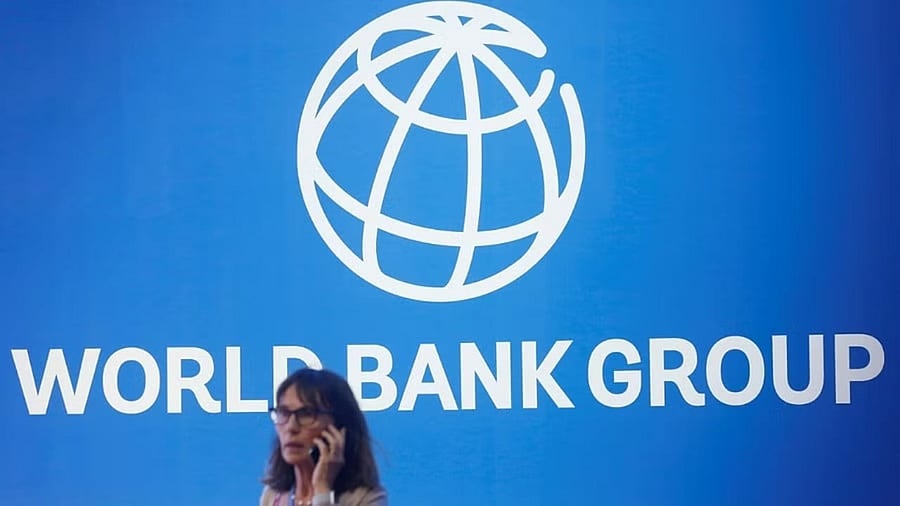
World Bank logo.
Credit: Reuters File Photo
Mumbai: Growth in South Asia is projected to be robust at 6.6 per cent this year, however, a significant slowdown looms on the horizon underscoring the need for trade openness and technology adoption, according to the World Bank’s twice-a-year regional outlook.
In wake of this, the World Bank underscores the need for reforms to promote trade openness and technology adoption could help the region create jobs and catalyze growth.
The latest South Asia Development Update - Jobs, AI and Trade - projects growth in the region to slow to 5.8 percent in 2026, a downward revision of 0.6 percentage points from the April forecast.
Downside risks include spillovers from the global economic slowdown and uncertainty around trade policy, socio-political unrest in the region, and labor market disruptions posed by emerging technology such as artificial intelligence (AI).
“South Asia has enormous economic potential and is still the fastest growing region in the world. But countries need to proactively address risks to growth,” said Johannes Zutt, World Bank Vice President for South Asia, in a press statement.
“Countries can boost productivity, spur private investment, and create jobs for the region’s rapidly expanding workforce by maximizing the benefits of AI and lowering trade barriers, especially for intermediate goods,” Zutt added.
South Asian countries rank among the least open to international trade and finance. The region’s high tariffs protect sectors where employment opportunities are shrinking. High tariffs also severely impede the manufacturing sector, which faces tariffs on intermediate goods—components and raw materials needed for production—that are more than double those in other emerging markets and developing economies.
On the other hand, sectors with lower tariffs, such as services, have accounted for three-quarters of employment growth during the past decade. Carefully sequenced tariff reductions, especially in the context of broader free trade agreements, could help boost private investment, increase competitiveness, and generate significant employment opportunities.
The report also recommends harnessing the potential of AI to boost productivity and incomes. The rapid development of AI is transforming the global economy and reshaping labor markets.
South Asia’s workforce has limited exposure to AI adoption due to the predominance of low-skill, agricultural and manual jobs. But moderately educated, young workers, especially in sectors such as business services and information technology, are vulnerable. Since the release of ChatGPT, job listings have fallen by around 20 percent in jobs most exposed to, and most replaceable by AI relative to other occupations.
Country Outlooks
India: It is expected to remain the world’s fastest-growing major economy, underpinned by strong consumption growth, improved agricultural output and rural wage growth. However, the FY26/27 forecast has been downgraded, partly due to higher tariffs on exports.
Bangladesh: Growth is expected to continue to accelerate to 4.8 percent in FY 25/26 and 6.3 percent in FY 26/27, as political uncertainty eases and investment picks up.
Bhutan: The forecast for FY25/26 has been downgraded to 7.3 percent due to hydropower construction delays but is expected to reverse as construction speed picks up in FY 26/27.
Maldives: Growth is projected to slow to 3.9 percent in 2026, driven by growing foreign exchange pressures. Tourism is expected to remain the main source of growth.
Nepal: The recent unrest and heightened political and economic uncertainty is expected to cause growth to decline to 2.1 percent in FY 25/26.
Sri Lanka: The forecast has been upgraded to 3.5 percent in 2026, due to strong growth in tourism and service exports.